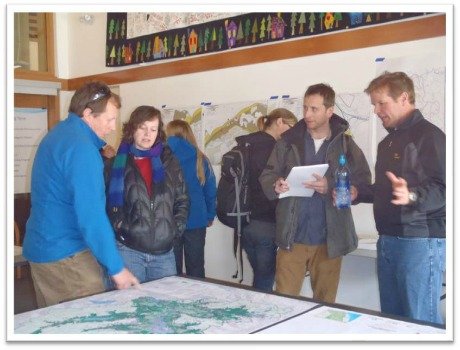
By Gagandeep Ghuman
Published: June 1, 2013
Two years after it was first offered, the district has yet to decide whether it wants a community forest area with exclusive rights to harvest.
In 2011, provincial representatives appeared before the district and asked it to consider buying into a community forest with a 10,000 cubic metre annual allowable cut.
Run successfully, CFAs can help generate a profit that can be used for public benefit.
In Fort St. James, for example, the profit from a community forest has gone into funding for the library.
It has also helped the hiring of a new economic development officer, with a special role to help insulate the town from downturns in the forest sector.
In McBride, for example, money from the community forest has helpedto fund the Community Hall and municipal water system upgrades.
In almost every location, local residents, and particularly First Nations people have been offered employment through CFAs.
Although harvesting is profit driven, a district-owned community forest would take a more expansive view.
It would have allowed the district to conserve old growth trees, protect recreational lands and the forest ecosystem.
Squamish, with its easily accessible logging roads, would have been an ideal candidate for a CFA.
But two years ago, councillors worried that the allowable cut might not be enough to generate profit needed to make the CFA sustainable.
Still, they passed a motion to investigate the experience of other communities.
Two years later, the investigation continues.
The district has not formalized its acceptance of the offer at this time,” says district spokesperson Christina Moore.
“We are currently exploring partnership opportunities to determine how to maximize benefits to the community while minimizing the risk to the taxpayer.”
CFAs have allowed municipalities to harvest timber for 25 years or more.
As of now, there are 47 established CFAs in B.C., and one of them is the Cheakamus Community Forest, situated on more than 30,000 hectares, and managed by Whistler and Lil’wat and Squamish First Nations.
Of the more than 30,000 hectares allocated for the Cheakamus Community Forest, approximately 15,000 hectares are protected through a variety of legal and voluntary mechanisms.
This allows indigenous flora and fauna to flourish and recreational opportunities to expand, says Peter Ackhurst, a member of the Cheakamus Community Forest Society.
“It puts the control of a community forest back in the hands of the community,” he says.
The annual allowable harvest is enough to break even.
“We manage to keep our heads above the water,” says Ackhurst.
But then again, it’s not sole profit that drives community forests.

